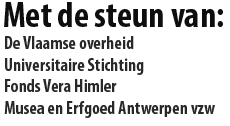P. SCHOLLIERS
Voedingsonderzoek over de 19de en 20ste eeuw in België, Nederland en Europa
Summary: Research into the eating habits in the 19th and 20th century in Belgium, the Netherlands and Europe.
This essay situates the Dutch and Flemish research into the eating culture in 19e and 20e century Europe. The emphasis lies on the historiographic developments since 1980. The author uses introductions on (colloquium) volumes, book discussions, overview essays and specialized magazines to outline an image of the approaches, methods, sources and debates. The overview starts around 1980, overflows cultural and other inversions of the nineties and ventures itself to outlining recent trends.
,
S.J. BRONNER
(The Pennsylvania State University, Harrisburg) The year of Folklore, and other Dutch lessons in public heritage
Introduction: From an American perspective, the national celebration of “The Year of Folklore” in 2005 in the Netherlands was unusual (Strouken 2005). Although public folklore as a field is well established in the United States with the general intention of promoting as well as documenting folklore activity in the public sphere, the organization of the “Year” by the Nederlands Centrum voor Volkscultuur (Netherlands Center for Folk Culture) appeared more nationalistic, comprehensive, and historical than contemporary American programs, which often tend to be more localistic, with the mission of recovering a lost or hidden sense of “community”, and view themselves as even counter-national or hegemonic (Bronner 1990).
This trans-Atlantic divide raises questions I want to address about the historical contexts for national approaches to folkloristics and ethnology, particularly in the rhetorical appeals to public constituencies. The answers to these questions, I argue, are central to the guiding conceptualization of the mission of folklorist and ethnologists which often go unstated but drive much of the thinking with as well as about tradition and heritage…..
………….
American folklorists, their vision colored by their social and historical context misperceive the “Year of Folklore” as an exclusionary, romantic nationalistic programming of American public folklore institutions as counter-productive. In my experience, both public heritage trajectories have similar goals of creating understanding, and indeed, tolerance for diverse cultures as well as appreciation for national traditions. But central to the difference is the perceived relation of the public and private realms and its translation into organizational, social, and intellectual structures. In the Netherlands, dichotomy is a social value, with instrumental purpose, while in the United States, it is viewed as a counter-productive, even hegemonic, tool of exclusion.
,
W.L. BRAEKMAN
Het liedboek van Denijs Bauwens uit Kalken (17de Eeuw)
Summary: The ballad book by Denys Bauwens from Kalken (17th C)
MS. 1485 of Ghent University central library has now seventy-three quarto-sized pages left and has suffered extensive water damage. It was written between January 1661 and 1668 by Denys Bauwens, an inhabitant of the East-Flemish Kalken who may have been a miller.
Apart from a few short texts, its main contents are 39 or 40 broadside ballads in Flemish, some copied from then current ballad books in print, a few others from printed broadside ballads by market singers. The repertoire is diverse, including 14 ‘amourous’ songs, some strongly erotic, 6 amusing songs, 3 drinking songs and 3 religious ones as well as single representatives of other types. All songs (as well as the few short texts) are listed in this paper in the order in which they occur in the MS. Of each the incipit, the title, the number of stanzas and lines are given. An alphabetically arranged list of incipits is added. Of a number of the more interesting ones, an extract or the complete text is quoted, thus giving a fairly good idea of the contents and scope of this remarkable collection that has not as yet been given the attention it deserves.
,

